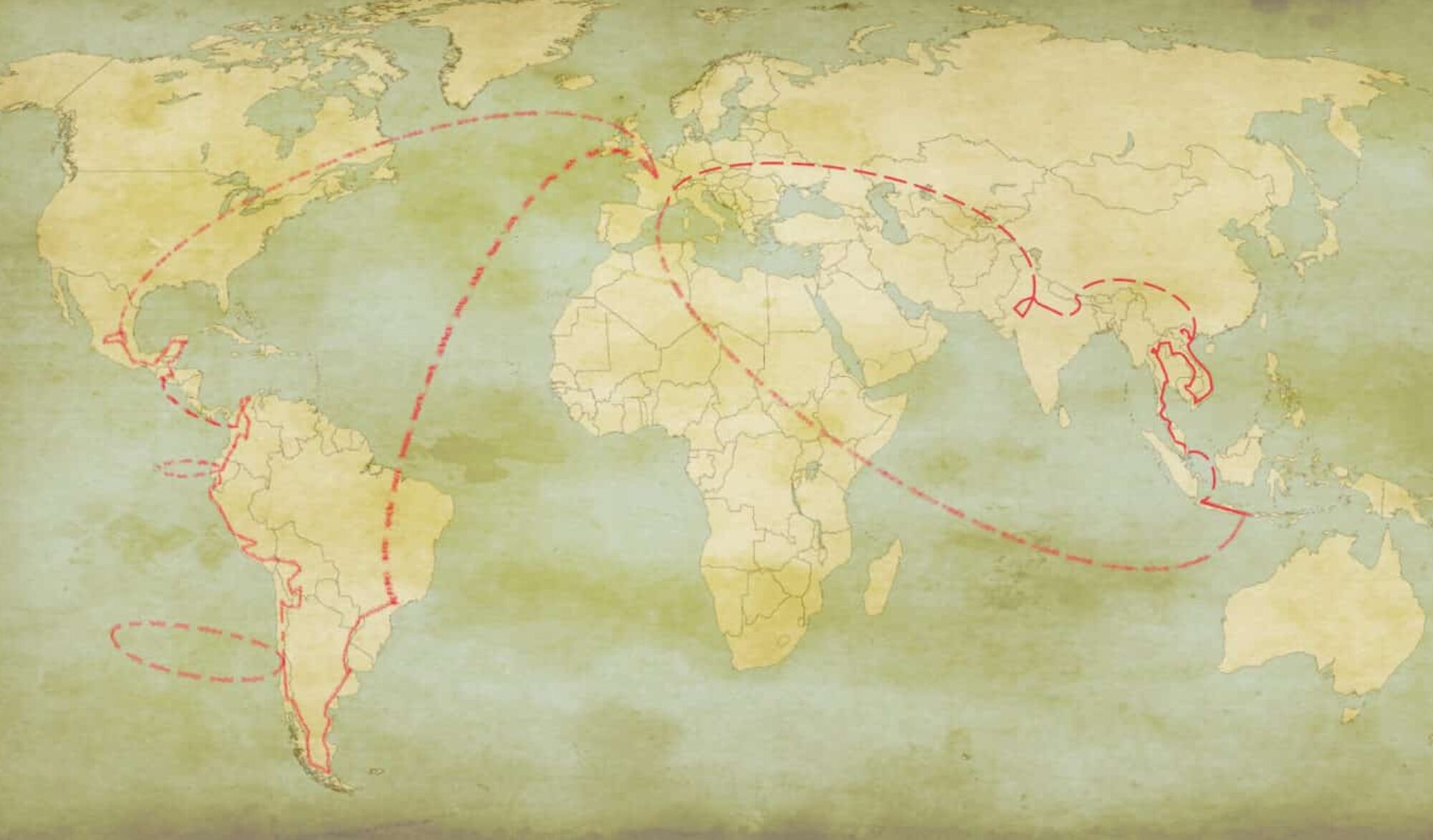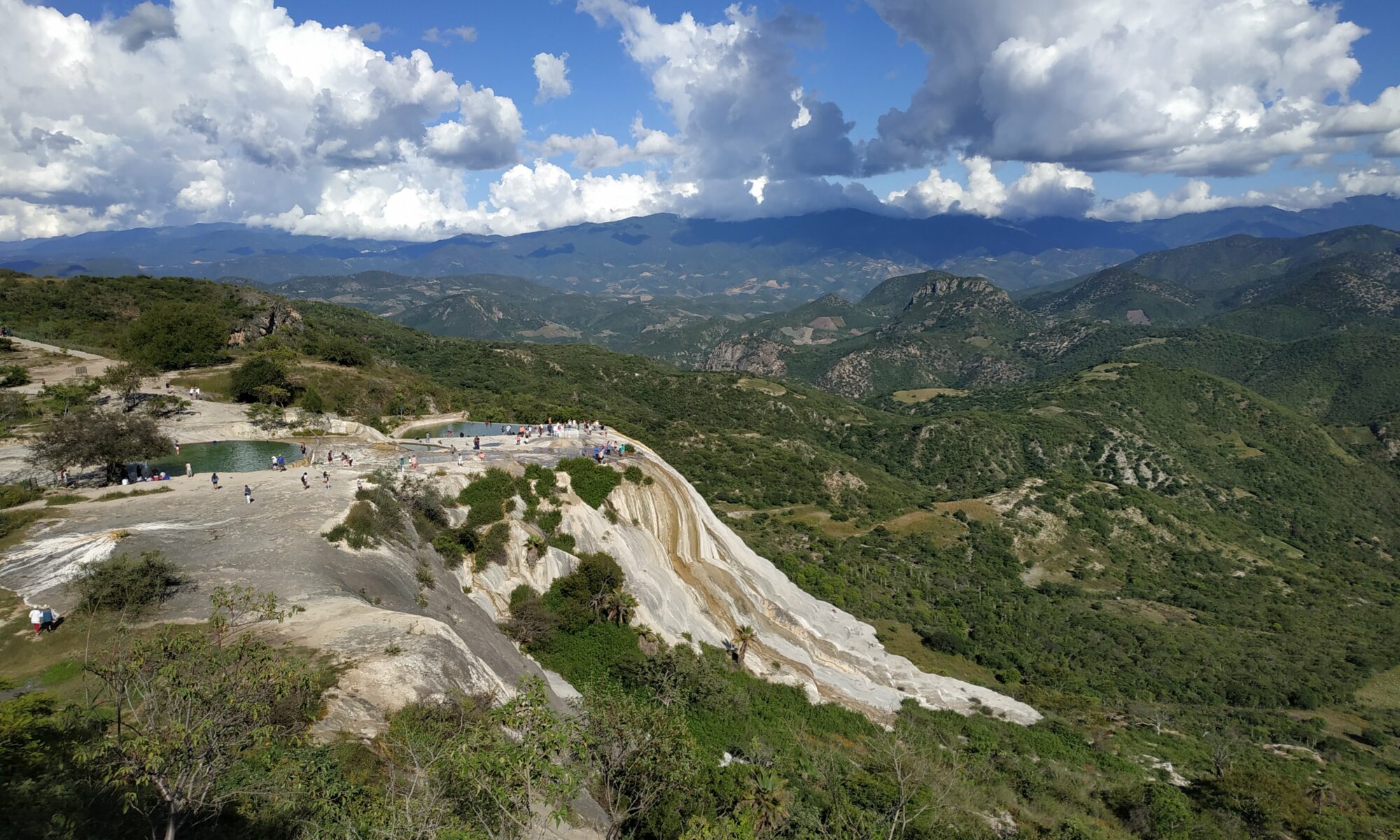The city of Oaxaca, located in the homonymous state, could be described as the most typical Mexican town. For any fan of the famous Pixar movie Coco, this is THE place to visit, as a lot of the movie’s scene are inspired by it. Here’s four things you can do in and around the city!
Take a stroll in the city center
As soon as we arrived, we started to walk around. We wanted to have a feel of the city and maybe find a place to eat for later, as we had heard a lot about Oaxacan food. We discovered a city full of colorful buildings. The zocalo (the central square) is full of life, with families strolling around, kids running everywhere and sellers showing their merchandise.
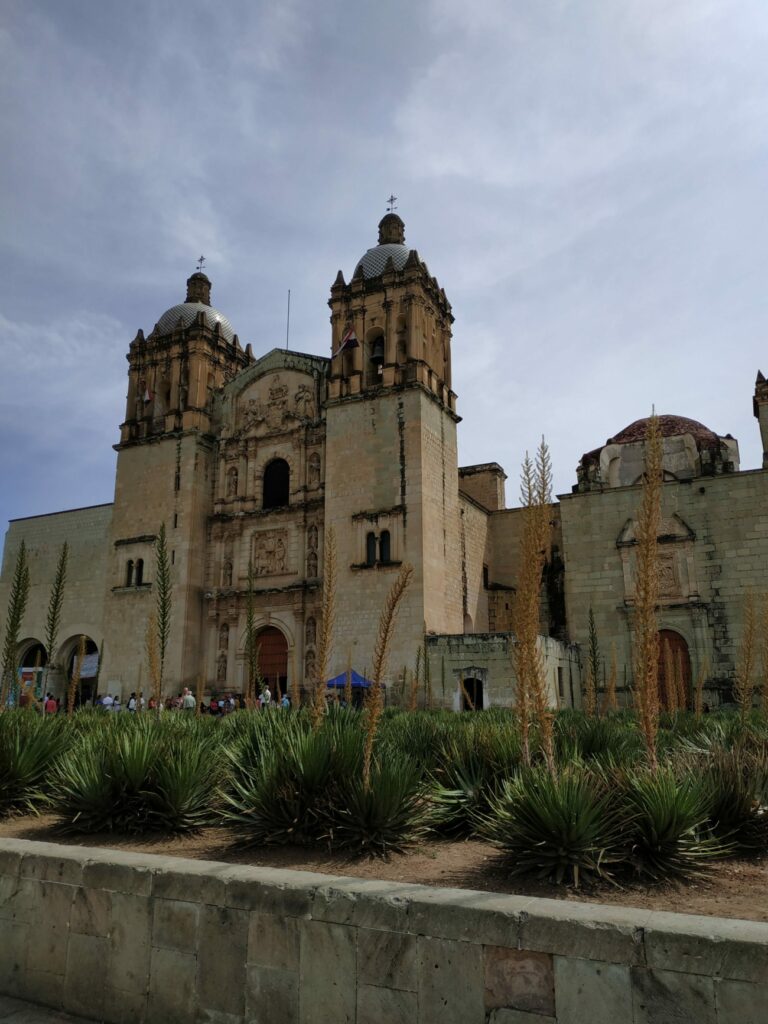
Be sure to enter the templo de Santo Domingo, a 16th century baroque church and ex-convent not far from the zocalo. Even though the facade might seem plain, the church interior is a feast for the eyes: intricate decorations, frescoes, gold everywhere… They really went full baroque inside! Nowadays, the former convent hosts a museum about Oaxacan history, which includes a collection of pre-Colombian artifacts from the site of mont Alban.
Go from one market to the other
Not far behind the zocalo, we found some markets, and we quickly got lost in them. We first entered the mercado Benito Juarez where we found a lot of handicraft. There were so many things we wanted to buy as souvenirs, it was hard to resist. Actually, since we had only a few weekends left before coming back to France, we didn’t resist that much… The space in our backpacks was our only limit.
Continuing our stroll, we arrived in the mercado 20 de noviembre. In this one, we found a lot of food. There are tables and chairs next to each stand, like small restaurants. It took us a long time to decide what we wanted to eat, as everything was so enticing. We actually had to go back there several times in order to try different dishes.
Try the food
While visiting Oaxaca, and in particular the mercado 20 de noviembre, you should absolutely try some of the regional specialties. According to some Mexicans, the first thing to try are the Chapulines. The name doesn’t give many hints about them, but they are actually grasshoppers. Most of the time, you will find them grilled and “sprayed” with spices. Mexican do like their food spicy. We summoned our courage and try some, the smallest ones we could find. We were not really convinced, but at least we tried!
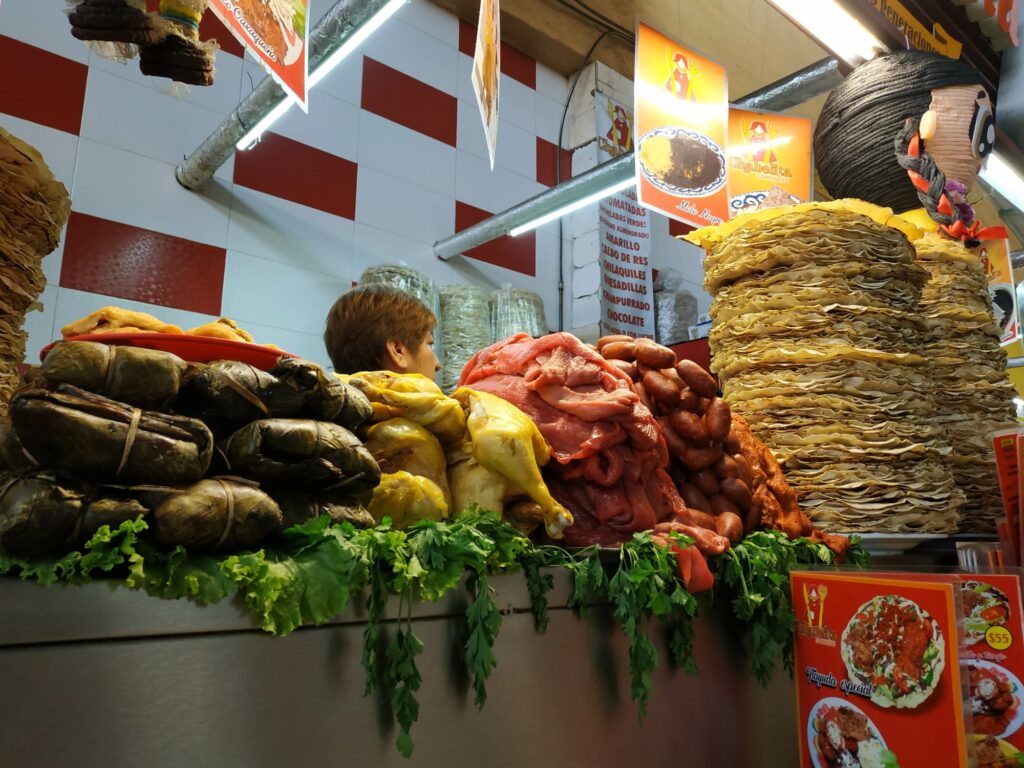
Another really typical dish, which doesn’t require as much courage to try, is the mole. It is a sauce, really famous in the area, which generally combine chili peppers and spices. It is generally used with some other vegetables or meat. You can find mole of all tastes and colors, but the most famous one is the mole negro (dark mole), made with chocolate. The taste of the chocolate in such a dish is quite unexpected, but it actually works perfectly.
We will stop here otherwise this post will become only about food, but you should know that there are much more specialties to try, like the Tejate (a chocolate and corn drink) and the tlayudas (a sort of giant taco).
Wander in the region
There are many things to discover in the region of Oaxaca. If you don’t have your own car and/or are limited in time, we recommend taking a day tour to discover at least the more touristic places. Just make sure to know what the tour include and what not (try to avoid any additional fees in the tour) and that you get to spend enough time at each place.
We chose a tour that was quite complete. Here is what we visited:
Arbol de Tule
The Arbol de Tule is the first stop on most tours. It is the largest tree in the world, and it is said that it would take up to 30 people holding hands to successfully to surround it. The tree is really large and quite majestic. In comparison, the church next to it looks tiny!
Fabrica de Mezcal
We then arrived at a mezcal factory, the cousin of tequila. The owners showed us how mezcal is made. It can be made from any type of agave plant, unlike tequila, which can only be made with blue agave. The whole process is still quite artisanal, they start by roasting the heart of the plant and have a donkey help turn the mill to break the agave and get the juice out of it. We discovered that they also make mezcal with all kinds of additional taste. The end of the visit comes inevitably with a tasting. Before trying it, we did the Mexican cheering : “Por arriba, pour abajo, por el centro, por adentro!” which could translate as: “Up, down, center, inside!”
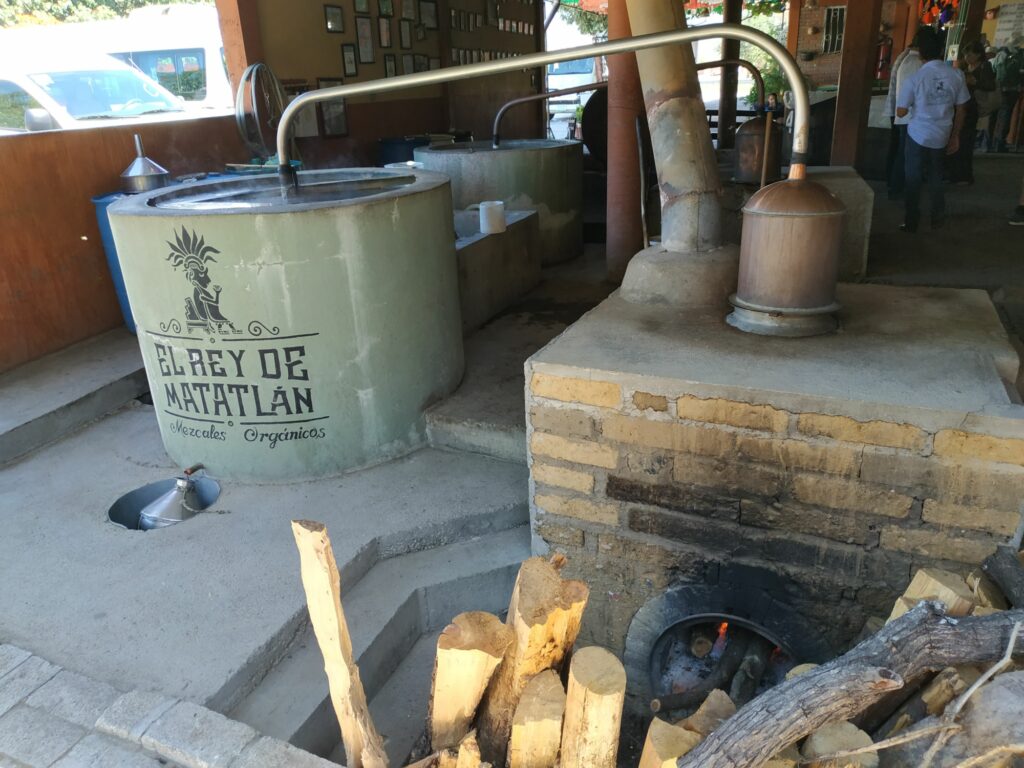
Textile factory
The next stop was at a textile factory. They showed us how the textile is dyed only with natural products that you can find in the region. Most of the dyes we saw were already used by the Mayas. Then they showed us the loom and how to use it. During the demonstration, we learned how to make the patterns on the tapestry and how difficult and long the process is. Most tapestries were really beautiful but quite expensive for our small budget. Although, when you see the craftsmanship required, the price is really fair. It can take up to 2 months of work to finish a small blanket, working 6 to 8 hours per day. And bigger objects can easily require several months more!
Mitlà
Mitlà is a small town with an archaeological site in the middle. It is one of the biggest site in the region of Oaxaca.
Most of the time, the price of the tour doesn’t include the visit of the ruins. Since we had already visited many sites in the last weeks, like Chichen Itza and Palenque, we decided to skip this visit and keep the money to buy souvenirs in the market next to the ruins.
Hierve el agua
Hierve el agua literally means boiling water. Situated in the middle of the mountains, the place looks like a petrified waterfall. It was created by water saturated in minerals. On the top of the cascade, lie a couple of pools. The water is far from boiling there. Since the sun hits the place directly for only a couple of hours per day, the water is instead fresh. But it is actually quite nice to take a swim there, especially during a hot day.
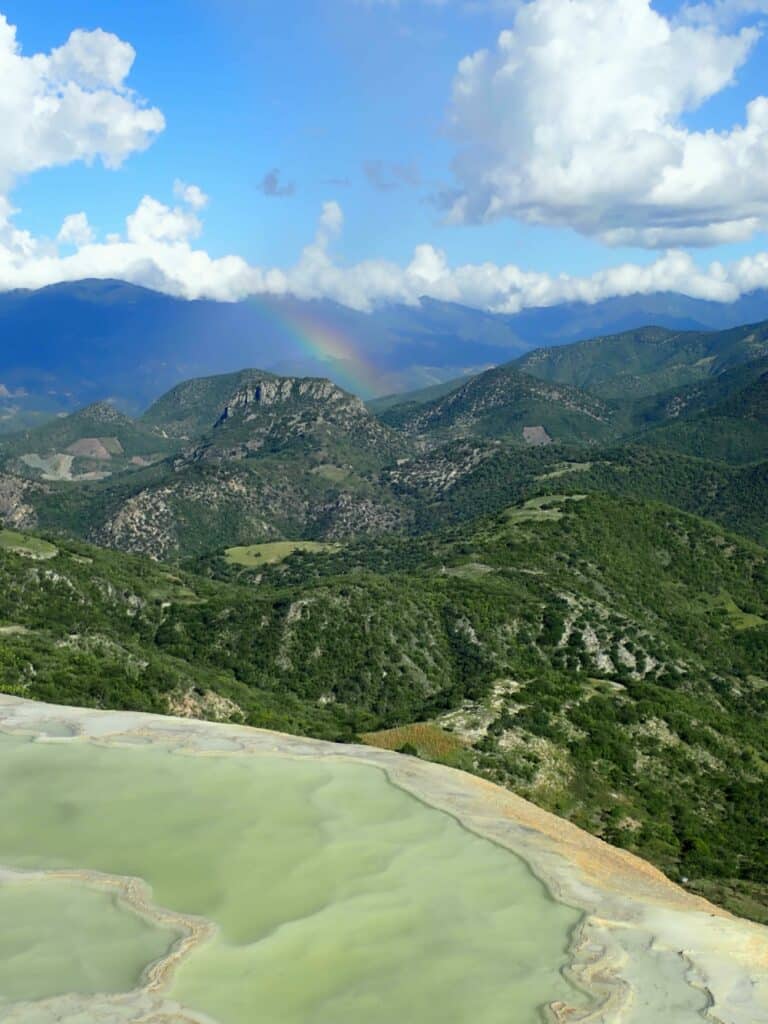
There is also a small path going a bit up that allows you to admire the full petrified waterfall.
Monte Alban
We actually didn’t visit it on this trip, as we had planned to join a friend a few days later in Mexico City and time was really short. Caroline had the occasion to go there during her previous visit to Mexico.
The archaeological site lies on top of a mountain dominating the surrounding area. As we were saying, many of the artifacts from this site are actually conserved in the museum of the old convent of Santo Domingo, together with a nice explanation of its history.
The visit of Monte Alban starts with a small museum that gives some explanation of historical facts. You can also find a small representation of the archeological site, to understand how wide it is.
Then you start the visit. Like most archeological sites, you only visit a small part of the ruins, which is still enough to keep you entertained for more than 2 hours. You can climb on a few pyramids and walk around the building. But don’t expect to actually go inside any of them. They are all closed for preservation. Monte Alban is not the most famous archeological site to visit, and so you usually get to enjoy it with only few people around.
To not miss any of our adventure, subscribe to our newsletter!
